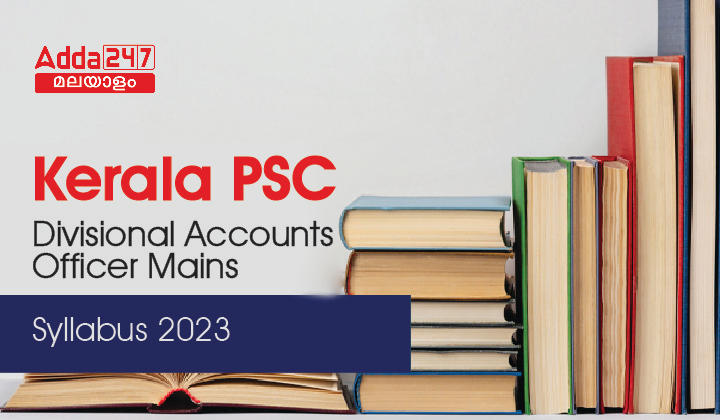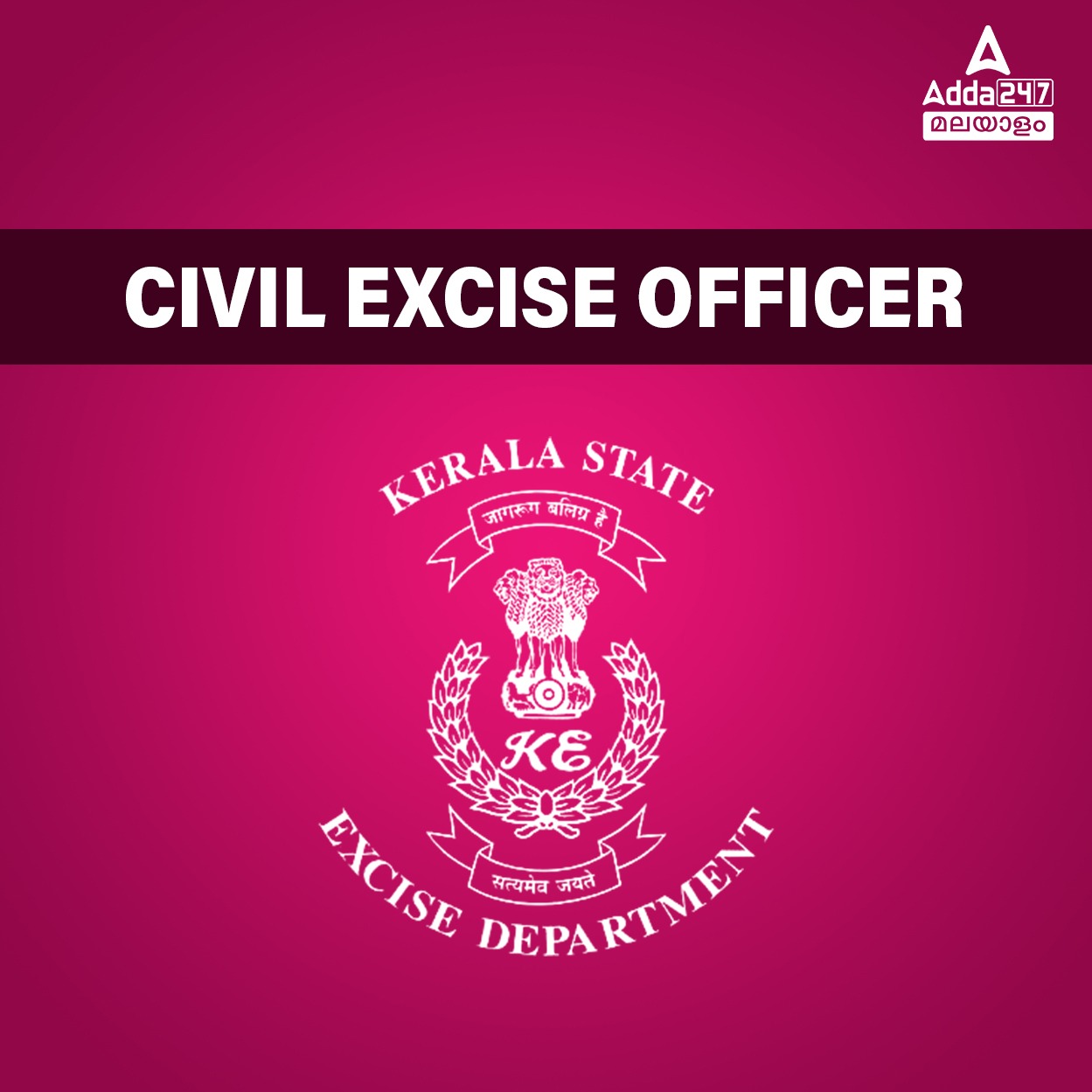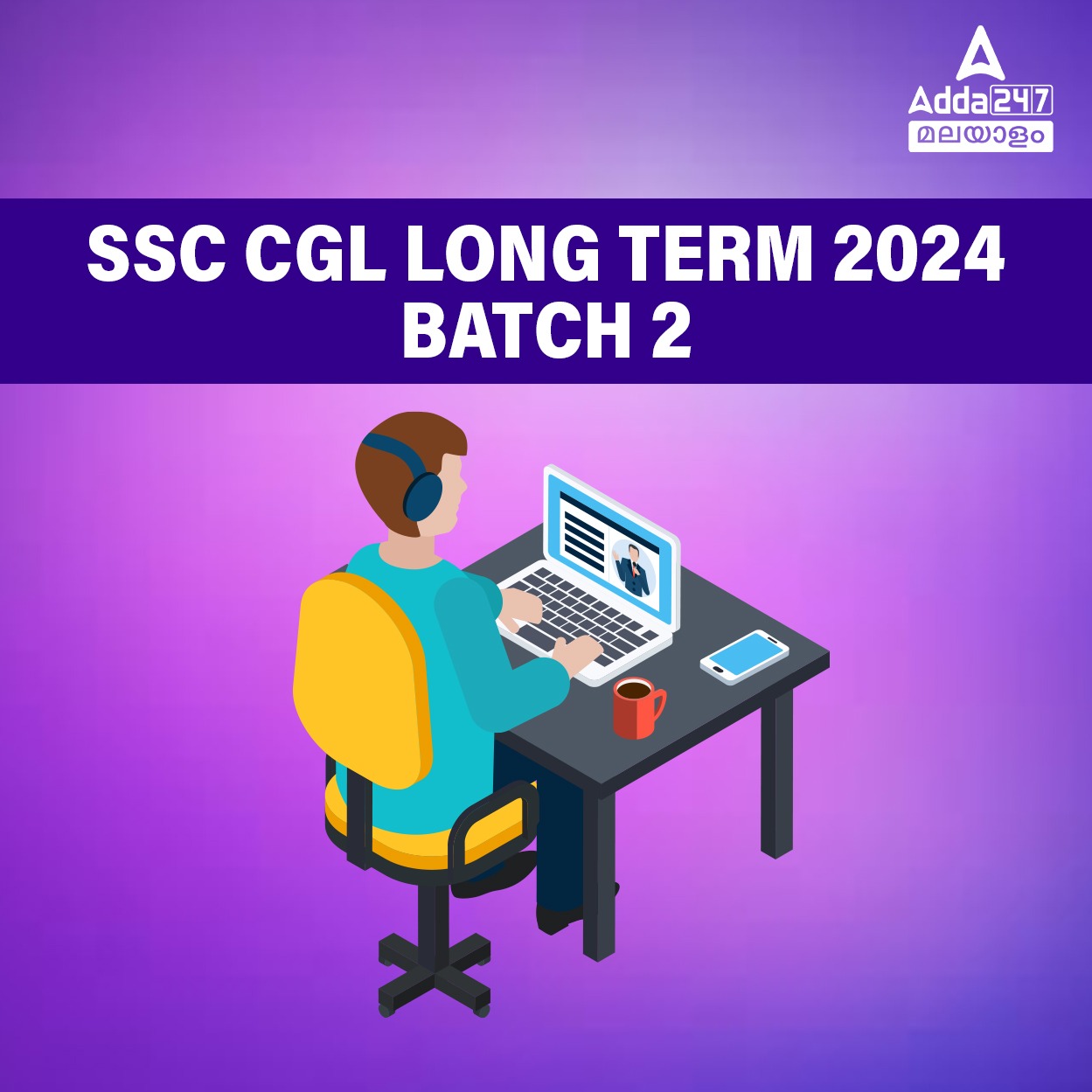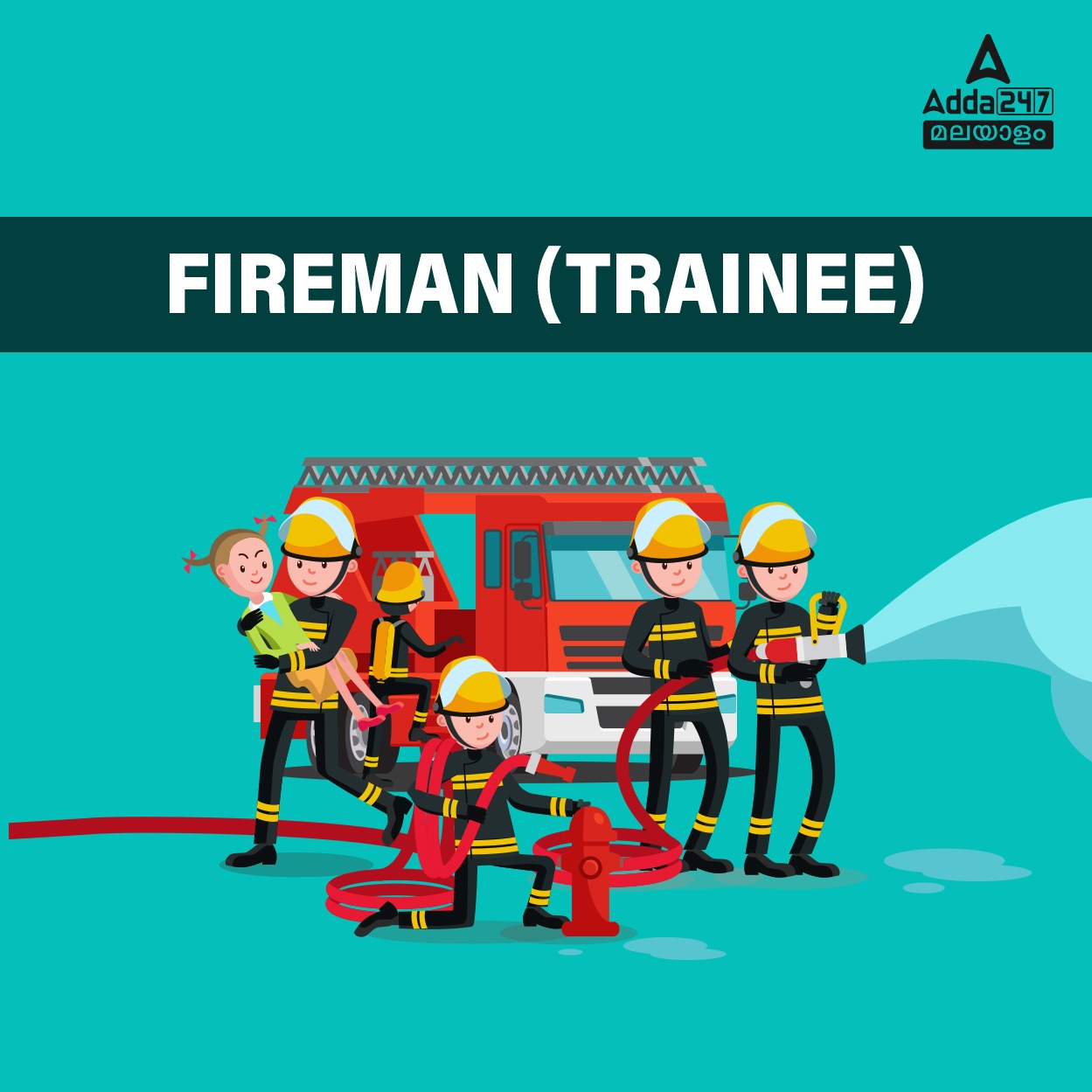Table of Contents
Kerala PSC Divisional Accounts Officer Mains Syllabus 2023: Kerala Public Service Commission has released the Kerala PSC Divisional Accounts Officer Mains Syllabus 2023. If you are preparing for the upcoming degree Level Mains Examination and would like to know the detailed syllabus, then your search ends right here. In this article, we will provide the detailed syllabus of the upcoming Kerala PSC Divisional Accounts Officer Mains Exam. In order to crack the exam, one needs to have a clear understanding of the syllabus, therefore read through Kerala PSC Divisional Accounts Officer Mains Syllabus 2023 to broaden your perspective. You can also download Kerala PSC Divisional Accounts Officer Mains Syllabus 2023 in PDF format.
Kerala PSC Divisional Accounts Officer Mains Syllabus 2023
Kerala PSC Divisional Accounts Officer Mains Syllabus 2023: കേരള പബ്ലിക് സർവീസ് കമ്മീഷൻ കേരള PSC ഡിഗ്രി ലെവൽ മെയിൻസ് പരീക്ഷ സിലബസ് 2023 പുറത്തിറക്കി. പരീക്ഷയ്ക്കുള്ള തയ്യാറെടുപ്പുകൾ ആരംഭിക്കാൻ സമയമായി. പരീക്ഷയിൽ വിജയിക്കുന്നതിന്, സിലബസിനെക്കുറിച്ച് വ്യക്തമായ ധാരണ ഉണ്ടായിരിക്കണം, അതിനാൽ കേരള PSC ഡിവിഷണൽ അക്കൗണ്ട്സ് ഓഫീസർ മെയിൻസ് പരീക്ഷ സിലബസ് 2023 വിശദമായി വായിച്ച് മനസിലാക്കുക. നിങ്ങൾക്ക് Kerala PSC Divisional Accounts Officer Mains Syllabus 2023 PDF രൂപത്തിൽ ഡൗൺലോഡ് ചെയ്യാം.
Kerala PSC Divisional Accounts Officer Mains Syllabus 2023: Overview
ചുവടെ നൽകിയിരിക്കുന്ന പട്ടികയിൽ Kerala PSC Divisional Accounts Officer Mains Syllabus 2023 സംബന്ധമായ എല്ലാ പ്രധാനപ്പെട്ട വിവരങ്ങളും ലഭിക്കും.
| Kerala PSC Divisional Accounts Officer Mains Syllabus 2023 | |
| Organization | Kerala Public Service Commission |
| Category | Exam Syllabus |
| Name of the Exam | Kerala PSC Degree Level Mains Exam |
| Department | Kerala Water Authority/ Kerala General Service |
| Name of the Post | Divisional Accounts Officer/ Divisional Accountant |
| Category No. | 360/2019, 361/2019, 362/2019, 363/2019, 364/2019, 487/2020, 391/2021, 392/2021, 393/2021 |
| Kerala PSC Divisional Accounts Officer Mains Admit Card Date | 20th May 2023 |
| Kerala PSC Divisional Accounts Officer Mains Exam Date | Paper I & II- 3rd June 2023
Paper III- 4th June 2023 |
| Type Of Exam | Descriptive |
| Total Marks | Paper I & II- 150 marks each
Paper III- 200 marks |
| Medium of Question | English, Malayalam |
| Exam Duration | 3 hours for each paper |
| Official Website | www.keralapsc.gov.in |
Kerala PSC Divisional Accounts Officer Mains Exam Pattern 2023
| Kerala PSC Divisional Accounts Officer Mains Exam Pattern 2023 | ||||
| S. No. | Paper | Subject | Maximum Marks |
Duration |
| 01 | Paper I | General Knowledge, Precis, and General English | 150 | 3 Hours |
| 02 | Paper II | Elementary Book Keeping | 150 | 3 Hours |
| 03 | Paper III | Arithmetic and Mensuration (Elementary but Practical) | 200 | 3 Hours |
Kerala PSC Divisional Accounts Officer Mains Syllabus Download PDF
Kerala PSC Divisional Accounts Officer Mains Syllabus 2023 ചുവടെ നൽകിയിരിക്കുന്ന ലിങ്ക് വഴി ഡൗൺലോഡ് ചെയ്യാവുന്നതാണ്.
Kerala PSC Divisional Accounts Officer Mains Syllabus 2023 Download PDF
Divisional Accounts Officer Mains Kerala PSC Syllabus 2023 Detailed
Paper I
General Knowledge, Precis, and General English
Part I: General Knowledge: (60 Marks) (60 minutes)
| General Knowledge | |||||
| Facts | History | Society and Arts | Politics | Science and Technology |
Latest |
| World Capitals (2) |
Ancient Indian Figures (2) |
Books Authors (2) |
International Bodies (2) | Inventors (2) | Budget (2) |
| World Languages (2) |
Medieval Indian Figures (2) | Fictional Characters (2) |
Constitution of India (2) |
IT (2) | National and International Agreements (2) |
| World Currency (2) |
Modern Indian Events (2) |
Awards and Honors (2) |
Parliament of India (2) |
Medicine (2) | Awards (2) |
| World Leaders (2 |
Independence Movement (2) |
Sports (2) | Assembly of Kerala (2) |
Space (2) | State, National and International Appointments (2) |
| Rivers and Mountains (2) |
Post-1956 Kerala (2) |
Festivals (2) | Important Laws (2) | Social Media (2) |
Public Health (2) |
| 10 | 10 | 10 | 10 | 10 | 10 |
Part II: English Language (60 Marks) (60 minutes)
| Subdivisions | |||||
| Noun | Singular / plural Nouns (4) |
Count/Un-count Nouns (2) |
Abstract Nouns (2) |
Possessive Pronouns (2) |
Spelling (5) |
| Tense | Present Simple (2) | Present Perfect (2) |
Simple Past (2) |
Past Perfect (4) | Irregular Verbs (4) |
| Verb | Phrasal Verbs (2) | Auxiliary/ Modals (4) |
Adverbs (2) | Active/ Passive (5) | Reported Speech (5) |
| Other | Pronouns (2) | Adjectives (2) | Prepositions (2) |
Idioms and Phrases (2) |
Jumbled Sentence (5) |
| 10 | 10 | 8 | 13 | 19 | |
Part III: Precis Writing (30 marks), (60 Minutes)
Section A: Give a Communicative summary of the report given in 100 words
(40 minutes) (20 Marks)
- One page (300 words) of a Company Annual Report that contains facts and figures
that can be presented as a table.
Section B: Say whether the following statements are True or False. (5 questions)
(20 Minutes) (10 Marks)
- Analytical ‘Correct/Incorrect’ questions based on the given passage.
Paper II
Elementary Book Keeping
Chapter I: Book Keeping up to Trial Balance: Introduction to Accounting – Meaning and Definition – Need – Importance- Advantage – Book-keeping and Accountancy- Limitations of Accounting – Systems of Accounting – Basic Terms of Accounting – Journal and Subsidiary books – Posting in Ledger – Balancing of Accounts -Preparation of Trial Balance – Rectification of Errors. (21 Marks)
Chapter II: Trading and Profit & Loss Accounts and Balance Sheet: Trading Account – Meaning and Definition – Purpose- Profit and Loss Account – Meaning and Definition – Purpose – Difference between Trading Account and Profit and Loss Account – Balance sheet – Adjusting Entries – Opening Entries – Closing Entries. (21 Marks)
Chapter V: Depreciation, Sinking Fund, Reserves, Reserve Funds, Secret Reserve: Depreciation – Meaning and Definition – Causes – Methods of Depreciation – Reserves – Meaning- General Reserve and Specific Reserve- Reserve Fund – Reserve Fund Vs Sinking Fund- Secret Reserve – Advantage – Disadvantages. (13 Marks )
Chapter VI: Bill of Exchange, Promissory Notes, Cheques: Meaning – Definition – Kinds of Bill – Parties to a ill – Maturity of Bill – Times of Acceptance – Negotiation of Bill – Endorsement – Kinds of Endorsement – Dishonour of Bill – Noting – Promissory Note – Meaning – Definition – Parties – Cheque – Meaning and Definition – Parties – Kinds of Cheque – Crossing of Cheque – Types of Crossing. (16 Marks )
Chapter VII: Portions relating to Voyage Account: Voyage Account – Important Terms – Freight – Primage – Passage Money – Address Commission – Port Charges – Bunker Cost – Stevedoring Charges – Voyage in Progress (Incomplete Voyage) (13 Marks)
Chapter IX: Self-Balancing Ledgers: Meaning and Definition – Objects of Self-Balancing Ledgers – Working of the System – Control Accounts. (5 Marks )
Chapter X: Capital and Revenue, Revenue Account, Receipts and Payments Accounts, Income and Expenditure Account: Capital Receipt – Revenue Receipt– Capital expenditure – Revenue expenditure – Deferred Revenue expenditure – Receipt and Payment Account – Income and Expenditure Account – Differentiate between Income and Expenditure Account and Receipt and Payment Account (16 Marks)
Chapter XVI: Manufacturing and Working Accounts and Cost Book Mining Company: Manufacturing Account – Meaning and Definition – Prime Cost – Cost of Production – Working Accounts – Meaning – Preparation – Cost Book Mining Company – Its Preparation. (13 Marks)
Chapter XVII: Cost Accounts: Classes of Cost Accounts – Objects of Cost Accounts – Labour in Costing System – Methods of Payment of Wages – Materials in Costing System – Overhead – Allocation, Apportionment and Re-apportionment of Overhead – Reconciliation with Final Accounts – Job Costing – Process Costing – Batch Costing – Contract Costing. (16 Marks )
Chapter XIII: Double Account System: Double Account System – Meaning and Definition – Features of Double Account System – Difference between Single Account System and Double Account System – Final Accounts of Double Account System – Clear Profit – Reasonable Return – Disposal of Surplus – Advantages and Disadvantages of Double Account System. (16 Marks)
Paper III
Arithmetic and Mensuration
Module 1: Number system: Factors and multiples, cyclicity, divisibility, remainders, prime and composite numbers. Real Numbers- rational numbers, irrationality and decimal representations, Division algorithm, Fundamental theorem of arithmetic
Module 2: Polynomials: Degree, Classification, Remainder theorem, Factor theorem, division algorithm for polynomials, zeros, and coefficients of the polynomial
Module 3: Quadratic Equations: Roots, Methods for finding roots (Factorization, completing squares, quadratic formula), Nature of roots, the relation between roots and coefficients
Module 4: System of linear equations in two variables: Methods (Graphical, substitution, elimination, cross multiplication), conditions for solvability
Module 5: Squares and square roots, Cubes and cube roots: Methods for finding square roots and cube roots
Module 6: Arithmetic Progression: Basic concepts, General terms, the sum of an arithmetic progression
Module 7: Profit, Loss, and Discount: Problems related to profit, loss, and discount
Module 8: Ratios and Proportions: Problems related to ratios and proportion
Module 9: Percentage: Important concepts, successive changes in percentage
Module 10: Simple and Compound Interest: Problems related to simple and compound interest
Module 11: Statistics: Definitions, Frequency distribution, cumulative frequency distribution, graphical representation (bar graph, histogram, and frequency polygon), arithmetic mean
Module 12: Mathematics in Commerce: Shares, Trading in Shares, dividends, debentures, banking, accounts-saving, current, recurring, fixed, sales tax, and value-added tax
Module 13: Circles: Secant and tangent, area of the segment, angles in alternate segments, cyclic quadrilaterals, area of sector, applications of area related to circle, circumference
Module 14: Triangles and Quadrilaterals: Types of triangles and quadrilaterals, properties, midpoint theorem, area, perimeter, Pythagoras theorem, angles
Module 15: Solids: Surface area and volume of solids
Module 16: Similar and Congruence Triangles: Problems Related to Similarity and Congruence
Module 17: Trigonometry: Angle of elevation and depression, Problems on height and distance, Trigonometric ratios, Trigonometric identities
Module 18: Coordinate Geometry: Distance between two points, internal and external division, centroid, in-center, straight lines- various forms
Module 19: Time, Speed, Distance, and Work: Problems related to time speed distance, and work.
Module 20: Sets: Description of sets, Types of sets, Venn diagram, operation on a set
Adda247 Malayalam Youtube Channel |
Telegram group:- KPSC Sure Shot Selection











